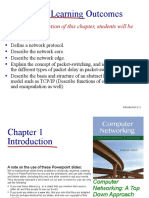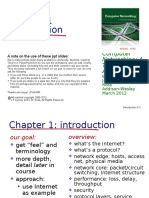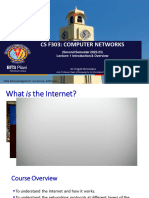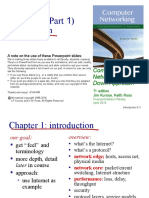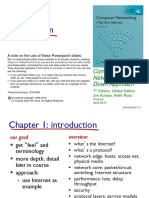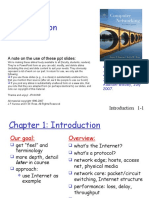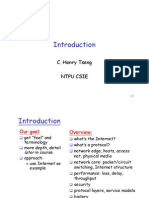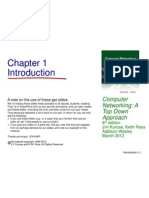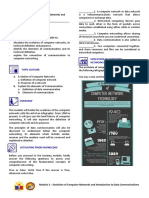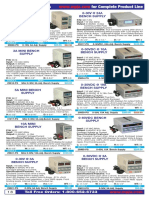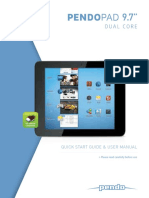0% found this document useful (0 votes)
43 views8 pagesCPCS371 - Chapter 1 Lesson 1
This document provides an introduction to the key concepts around the Internet. It discusses what the Internet is, including its basic components like end systems, communication links, routers, and switches. It also defines important terminology like protocols and describes examples of common network protocols. Finally, it presents the Internet as both a "nuts and bolts" view focusing on the physical infrastructure and a "service view" focusing on the applications and services it enables.
Uploaded by
wdyanfCopyright
© © All Rights Reserved
We take content rights seriously. If you suspect this is your content, claim it here.
Available Formats
Download as PDF, TXT or read online on Scribd
0% found this document useful (0 votes)
43 views8 pagesCPCS371 - Chapter 1 Lesson 1
This document provides an introduction to the key concepts around the Internet. It discusses what the Internet is, including its basic components like end systems, communication links, routers, and switches. It also defines important terminology like protocols and describes examples of common network protocols. Finally, it presents the Internet as both a "nuts and bolts" view focusing on the physical infrastructure and a "service view" focusing on the applications and services it enables.
Uploaded by
wdyanfCopyright
© © All Rights Reserved
We take content rights seriously. If you suspect this is your content, claim it here.
Available Formats
Download as PDF, TXT or read online on Scribd
/ 8

